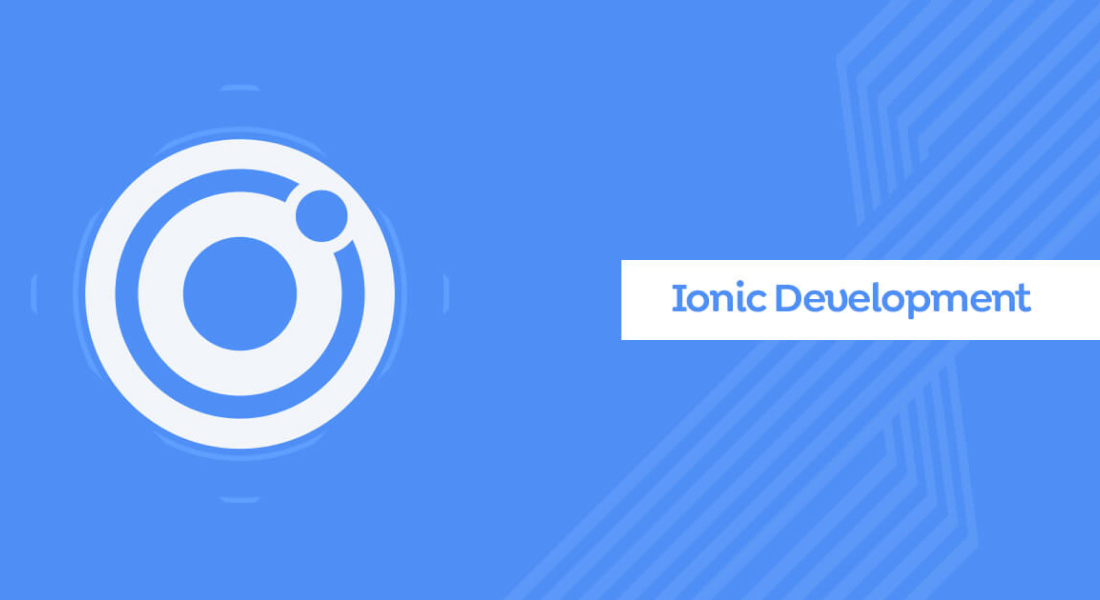- Native apps. These apps are written for a specific OS on which they will be used. The advantage of this type of app over the others is higher performance since they are written purely for that device, thus exploiting 100% of its resources.
- Web apps. These applications simply consist of websites adapted for display on mobile devices.
- Hybrid or cross-platform apps. These applications can be used on different types of devices with various operating systems. They offer advantages in terms of time and cost for complex web development but, on the other hand, have the disadvantage of offering lower performance than native apps since the hybrid app must adapt to all the devices on which it "runs."
MaybeWorks uses Ionic, an open-source framework for building hybrid apps, among other app development tools. It was designed and developed by Max Lynch, Ben Sperry, and Adam Bradley of Drifty Co (a company in the United States). In this article, we want to discuss Ionic features. For those interested in exploring more open-source JS projects, check out our present article on the 10 best JavaScript open-source projects.
Introduction to the Ionic Framework

Ionic is written in Javascript, based on Angular and Node.js, and was first released in 2013. The Ionic Node JS pairing streamlines development workflows through familiar tooling and backend flexibility. With the integration of Cordova, this framework allows it to interface with different device features:
- Camera
- Address book
- GPS
- SMS
- Calls
- Calendar, etc.
Various versions of Ionic have followed over time, and nowadays, in addition to Angular, the React and Vue frameworks have also been integrated. The latest version of Ionic is 8.2.2. It was released on 12 June 2024 and includes updated iOS 17 design specs, built-in light and dark palettes, AAA high contrast palette, and more. To take full advantage of these updates and features, you can hire Angular developers who specialize in building hybrid applications with Ionic.
There are several advantages of using Ionic, including:
- Large collection of graphical components
- Wide range of design tools
- Consistent (100 % Lighthouse PWA performance score)
- Integration of various frameworks
- Used by many developers in over 200 countries worldwide
However, there is no shortage of Ionic Framework disadvantages. The potential of the Ionic Framework demonstrates the great care MaybeWorks takes in choosing development tools. Our outstaffed Ionic developers have brought many projects to success. If you are interested, we have also investigated the Ionic app developer salary.
Core Features of the Ionic Framework

To be more profound in mobile app development, we recommend that you investigate the difference between Ionic vs Electron. Now, let's discuss four core Ionic framework features.
Cross-Platform Development
Ionic developers can employ a single codebase to create cross-platform mobile applications. This implies that developers just need to code their application to be available across several platforms, such as the web, iOS, or Android. Multi-platform capability, as explored in Ionic vs React Native, significantly reduces the time and money spent on development that comes with maintaining distinct codebases for each platform.
Web Technologies Integration
Ionic leverages the power of standard web technologies like HTML, CSS, and JavaScript. This means developers can use their existing skills to build mobile applications, eliminating the need to learn new programming languages. The integration of these web technologies allows for rapid development and easy customization. Whether you’re tweaking the UI or adding new features, Ionic’s use of familiar web standards ensures a smooth and efficient development process.
Rich Set of Pre-Designed UI Components
Developers have access to numerous UI components, including switches, buttons, input fields, lists, and other easily used components. Special attention should be paid to plug-ins, the connection of which extends the application's functionality and allows the use of particular smartphone features, such as geolocation, fingerprint scanners, NFC, and push alerts.
Cordova Plugins
To extend your app's functionality, Ionic utilizes Cordova plugins. These plugins allow your application to access native device features such as the GPS, camera, and filesystem. By bridging the gap between native development and the web, Cordova plugins enable you to create powerful, feature-rich applications without compromising performance or user experience. Whether you need to capture photos, track locations, or manage files, Cordova plugins seamlessly integrate these capabilities into your Ionic app.
Feel free to contact MaybeWorks to hire Ionic developers!
Advanced Features and Tools

Now, let`s discuss the features of Ionic framework in more detail.
Ionic Command-Line Interface
The Ionic Command-Line Interface (CLI) is a powerful tool that streamlines the development process. With a simple set of commands, you can create, build, test, and deploy your Ionic apps. The CLI also includes functionalities like Live Reload, which instantly reflects code changes in your app during development. This tool greatly enhances productivity by automating common tasks and providing a cohesive development experience.
TypeScript Wrappers for Cordova Plugins
Ionic provides TypeScript wrappers for Cordova plugins, making integrating and using them within your app easier. What is TypeScript here for? Its static typing and advanced tooling support help catch errors early and improve code quality. These wrappers ensure seamless integration of native device features, allowing you to leverage the full power of Cordova plugins while maintaining the benefits of TypeScript's robust development environment.
Simplified Native API Integrations
Integrating native APIs can often be complex and time-consuming. Ionic simplifies this process through Capacitor, its modern native runtime. Capacitor provides a straightforward way to call native code, manage plugins, and handle tasks like push notifications and geolocation. This simplification helps developers focus on building features rather than dealing with the intricacies of native API integration.
Continuous Integration and Delivery (CI/CD) Services
Ionic supports continuous integration and delivery (CI/CD) services, which is essential for modern app development. These services automate your app's testing, building, and deployment, ensuring that updates are delivered quickly and reliably. By integrating with popular CI/CD tools, Ionic helps maintain a consistent and efficient development workflow, reducing the time and effort necessary to release new features and fixes.
App Distribution and Live Updates
Distributing your app and pushing updates is effortless with Ionic Appflow. This service enables over-the-air updates, allowing you to deploy changes without requiring users to download a new version from the app store. Appflow’s live updates feature ensures that your users always have your app's latest update, improving user experience and engagement by keeping your app up-to-date with minimal hassle.
Modern Alternative to Cordova
While Cordova has been a staple in hybrid app development, Capacitor is a modern alternative that addresses many of its limitations. It offers a more streamlined and developer-friendly experience, with improved performance and enhanced support for modern web standards. By using Capacitor, developers can enjoy a more intuitive and efficient workflow, making building and maintaining high-quality mobile applications easier.
Native Runtime for Cross-Platform Apps
Capacitor, Ionic’s native runtime, is crucial in bridging the gap between web and native development. It provides a consistent API for accessing native device features across different platforms. Capacitor’s runtime ensures high performance and reliability, making it an ideal solution for developing cross-platform apps that need to utilize native capabilities without compromising on speed or functionality.
Support for Progressive Web Apps (PWAs)
In addition to mobile apps, Ionic has robust support for Progressive Web Apps (PWAs). PWAs combine the best mobile and web apps, offering features like offline access, push notifications, and fast loading times. Ionic’s framework is designed to make it easy to build PWAs that deliver a native-like experience on the web. This support ensures that your app can reach users across different platforms and devices, providing a versatile solution for modern app development.
For a deeper understanding, check out the discussion on PWA vs native apps.
How Can MaybeWorks Help With Ionic Framework Development?

MaybeWorks is an IT staff provider with over 12 years on the market. Our developers specialize in Ionic and are experts in React, Angular, and Node.js technologies. No doubt that they will accelerate project development. MaybeWorks team is rated 5 out of 5 on Clutch.
Benefits of augmenting your team with developers from MaybeWorks (6 reasons why it's convenient to work with us):
- Easily plan your budget. Outstaffing makes it easy to plan your budget. We provide a fixed rate for developers with no hidden fees.
- Full personnel administration. Any number of hires, dismissals, certificates, reports, etc., without additional commission within a single contract.
- Any number of foreign employees. We offer quality customer service and highly qualified experts. We outstaff any number of employees worldwide - from 1 person.
- Time saving. We save your time - official registration and proper personnel management under the law.
- No labor relations. Since you have no labor relations with them, we protect you from fines and sanctions for violating the law and disputes with employees outside the staff.
- Saving your efforts. We optimize processes, and we take care of communication with the staff if necessary.
We have deep competence in React/Angular, Node.js (Nest.js/Express), AWS/Google Cloud Services, MongoDB, MySQL, and PostgreSQL. Our developers augmented teams and assisted ERPs, CRMs, HRMs, B2B portals, SaaS, IaaS platforms, and numerous other projects.
Conclusion
In this article, we have discussed the features of Ionic in detail. If you need to augment your team with Ionic developers, our MaybeWorks team offers:
- Only the best and most experienced professionals in the IT market
- Free specialist search
- Optimization of personnel costs
- Knowledge level scoring for each specialist
- No costs for providing a workplace
- Free replacement of developers at the customer's request
- Narrow specialization of our professionals
Feel free to contact MaybeWorks to hire Ionic developers!
FAQ
-
What are the key features and benefits of the Ionic Framework?
We highlight cross-platform development, pre-designed UI components, and native plugin integration. These contribute to developing versatile, high-performance mobile apps using familiar web technologies. Their benefits include faster development, consistent user experiences across various platforms, and access to native device capabilities.
-
Why might Ionic be a good choice for mobile app development?
It enables rapid, cost-effective cross-platform development using familiar web technologies like HTML, CSS, and JavaScript. It provides a rich library of pre-designed UI components and seamless integration with native device features through Cordova and Capacitor.
-
Why is Ionic considered cost-effective for startups and small businesses?
This is because it allows developers to create apps for multiple platforms (iOS, Android, and the web) from a single codebase. Its use of familiar web technologies means that businesses can leverage existing web development skills, minimizing the need for specialized native development expertise.
-
How does Ionic compare with other frameworks like React Native and Flutter?
Ionic creates hybrid apps using web technologies (HTML, CSS, JavaScript), making it ideal for teams with web development expertise seeking rapid, cost-effective cross-platform solutions. React Native, using JavaScript and React, builds true native apps for better performance, suitable for projects where near-native performance is crucial. With its Dart language, Flutter compiles native ARM code for excellent performance and offers a rich set of customizable widgets.
-
What are the benefits of having a single codebase for iOS, Android, and web applications?
It is significantly cost-effective, as developing and maintaining one codebase is cheaper than managing separate ones for each platform. This approach also speeds up the development process, as features and updates can be implemented once and deployed across all platforms. Additionally, maintenance is simplified, with bugs and issues identified and fixed in one place, improving overall app stability.















